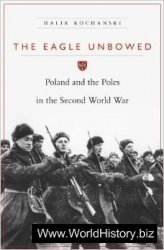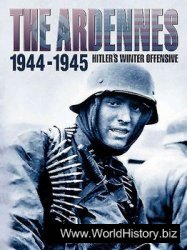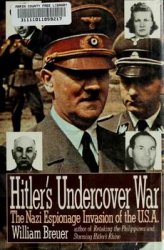Was the Spanish Civil War a struggle to safeguard democracy from the threat of fascist tyranny?
Viewpoint: Yes. While the causes were complex, the Spanish Civil War was reduced to an ideological struggle between the Left and the Right.
Viewpoint: No. The Spanish Civil War resulted from the Nationalists’ attempt to impose order on a country paralyzed by anarchy and to replace a Republican government directed by communists who were just as tyrannical as the fascists.
After a prolonged period of repressive dictatorship, Spain overthrew its monarchy in 1931. The Republican government that rose in its place faced many pressing problems, few of which were solved in a lasting and decisive way. The election of a Left-wing Popular Front government in early 1936 antagonized many of the Republic’s growing number of opponents into action. On 17 July of that year rebellious army units began a Right-wing coup d’etat against the government in Madrid. Eventually coming under the command of General Francisco Franco, the insurrection turned into a civil war that the Republican forces seemed more and more likely to lose. By March 1939 Madrid had fallen to the rebels, and Spain settled into a dictatorship that lasted until Franco’s death In 1975.
The Spanish Civil War captured international attention on a grand scale. Beginning at a time when fascism and authoritarianism were in the ascendancy throughout Europe, the battlefields of Spain appeared to be proving grounds for the political Left’s ability to contain the new ideologies of the Right. Thousands of sympathizers poured into Spain to defend the Republic, while fascist Germany and Italy aided the Right-wing rebels. The war was frequently seen as a test case of freedom versus tyranny and an important precursor to World War II.
There are, however, other perspectives on the Spanish Civil War. A growing counterargument impugns the nature of the Spanish Republic, suggesting that it was a weak entity prone to the use of terror and to increasing reliance on indigenous communists and their sponsors in Moscow. Franco’s forces may not have been as saintly as rebel propaganda portrayed them to be, but the flaws of the Republic seemed to tarnish its democratic image, weaken its claims to legitimacy, and undermine its pretensions to moral superiority. To supporters of this argument, the civil war looked more like a contest of two objectionable regimes battling for supremacy rather than a simple tale of good and evil.
Viewpoint:
Yes. Whiie the causes were complex, the Spanish Civil War was reduced to an ideological struggle between the Left and the Right.
Like most major conflicts, the Spanish Civil War (1936-1939) had many causes. Inefficient patterns of landholding, an impoverished and thoroughly disenfranchised workforce, a nervous elite intent upon maintaining order, a Catholic Church accustomed to holding significant wealth and social influence, a top-heavy and distrustful military, strong regional autonomy movements, and a government uncertain of how and whether to achieve reform all helped destabilize the country and contributed to the outbreak of war. Yet, from the outset, the complexity of the Spanish Civil War was subsumed beneath a rhetoric that depicted the fighting not so much as the outcome of many political, social, economic, and cultural problems that had long festered in Spain, but rather as a simple black-and-white battle of democracy (or in some cases, communism) versus fascism, freedom versus tyranny, and good versus evil.
The war began when a small group of high-ranking military officers attempted to overthrow the Spanish government in July 1936. That action was only the spark, however, and the true origins of the war—the causes that led those officers to attempt the coup in the first place-have been the subject of considerable historiographic debate. Historians have located the roots of the Spanish Civil War in different historical moments: in the attempts to modernize the Spanish economic and political system in the late nineteenth and early twentieth centuries; in the disentailments of Church land in the early 1800s; and even in the landholding patterns established during the Reconquista (the Reconquest, a series of military campaigns that liberated the Iberian Peninsula from Moorish rule), which ended in 1492. Others have argued that the actions of the Republican government that came to power in 1931 doomed Spain to war, though these same historians—like Spaniards at the time—often disagree over whether the Republic went too far in its reforms.
The reasons for the war, then, are tremendously complex. Yet, from the outset, this complexity was lost in the polarizing rhetoric of the “sides.” Within Spain, supporters of the Republic (known collectively as Loyalists or Republicans) included regional autonomists, professional middle classes sympathetic to a centrist liberalism, and most of the industrialized and agricultural working classes, many of whom were members of socialist and anarchist trade unions. Supporters of the insurgents (known as Nationalists) included the landowning elite, industrialists, large parts of the military, the Catholic Church, and the Falan0e Espanola (Spanish Phalanx or Spanish Fascist Party). To Loyalists, the rebels seemed intent upon replacing Spain’s fledgling democracy with an authoritarian government and protecting the privileges of those elite groups that had long profited at the expense of the common people. To Nationalists, supporters of the Republic were intent on destroying the traditions and heritage that had made Spain great, and they were plunging the nation into chaos. When anarchist and socialist groups seized upon the outbreak of war as the moment to initiate revolutionary activity—establishing both agricultural and industrial collectives, taking control of public utilities in Barcelona, and abolishing many forms of hierarchy—this polarization became even more stark. Now the motivation to fight was greater; not only were Loyalists protecting their nascent representative government, but they were also ushering in an age of true liberation from the social, political, and economic restraints that had oppressed the Spanish working classes for centuries. Many Nationalists, on the other hand, looked at such revolutionary activity and saw a country jumping headlong into “godless” and bloody communism.
Propaganda fed the polemic. Graphic posters and tracts that demonized the enemy first appeared during World War I, but propaganda was produced on an unprecedented scale in the Spanish Civil War. New technologies widened the range of media; propaganda included not only posters and pamphlets but also radio, photomontage, and sound cinema. Indeed, so crucial had persuading the hearts and minds of the Spanish citizenry become to the war effort that both sides dedicated considerable resources to producing propaganda, treating it as yet another weapon. On the Republican side, for example, the Confederacion Nacional del Tmbajo-Federacion Anarquista Iberica (National Confederation of Labor-Iberian Anarchist Federation, CNT-FAI) turned out posters that showed virile peasants suffocated by the “snake” of fascism, while Nationalists depicted their leader. General Francisco Franco, as a noble medieval crusader, his image superimposed on a map of Spain that was clawed to pieces by bloodthirsty “Reds.”
This kind of binary rhetoric was in many ways a typical by-product of war. What transformed the Spanish Civil War into more than a conflict featuring nasty propaganda—and turned it into a battle over the grand ideas of “freedom” on one hand and “tyranny” on the other—was the international context in which it took place.
1936 poster of the communist Popular Front in Spain during the Spanish Civil War
(Salmer, Barcelona)

U
:X"
Z
C>-:>
To many observers worried about the advance of fascism on the European continent, the war in Spain could not be separated from tensions building elsewhere. To many, the war indeed came to look like a “dress rehearsal” for larger conflicts that loomed ahead.
For supporters of the Republic, it was easy to link Nationalist forces with the larger international threat of fascism. Franco drew support from the Falai�e. Forcibly merged with another extreme Right-wing party, the monarchist Tmdi-cion Espcinola, it became the sole legal party within the Nationalist zone. Its leader, Jose Antonio Primo de Rivera, was executed in a Republican prison on 20 November 1936 and became a martyr of the Nationalist cause. More significant was the aid that Franco received from both Italy and Germany. Franco and his liaisons approached both Italian dictator Benito Mussolini and German leader Adolf Hitler within the first few days of the military uprising, and arranged the transfer of ships, weapons, planes, advisers, and troops. Indeed, Italian and German airplanes helped airlift Nationalist troops across the Mediterranean from Spanish Morocco, ensuring that the rebellion reached mainland Spain. The support continued until the end of the war: Italian Blackshirts fought in the Battle of Guadalajara (8-18 March 1937), and the German Condor Legion, an elite air unit, bombed the militarily unimportant (but, for the Basques, symbolically sacred) town of Guernica (26 April 1937), killing hundreds in the first purposeful airplane attack on a civilian population. It was easy for Republican supporters to look at Franco’s army and see international fascism not only at work, but as the driving force of the war itself Some historians concur: eminent scholar Paul Preston states that “Mussolini and Hitler turned a coup d’etat gone wrong into a bloody and prolonged civil war.”
The Western powers were far less eager to enter the conflict than Germany or Italy. France and Great Britain led an effort to prevent other nations from intervening in the Spanish Civil War, and the resulting Non-Intervention Agreement (August 1936)—which was signed by Germany, Italy, and the Soviet Union but flouted by all three—effectively prevented the Republic from receiving war materiel it desperately needed. The one major power that came to the aid of the Loyalists was the Union of Soviet Socialist Republics (U. S.S. R.). Although reluctant to involve itself at first, the Soviet Union began contributing aid slowly in August 1936 and then signaled its full-fledged assistance in October by delivering planes, tanks, and weapons in exchange for the transfer of Spanish gold reserves.
Soviet aid did not come without strings attached. Certainly, the Soviets used their status as sole supplier to the Republic to win both military and political influence within Spain. The anarchist, socialist, and Partido Obrero e Unifica-cion Marxista (Party of Marxist Unification, POUM) militias were suppressed in favor of a unified People’s Army, and positions within the government, eventually including the premiership itself, went to communists or communist sympathizers. Some historians have suggested that these tactics reveal that Soviet leader Josef Stalin had imperialist goals in mind with Spain. Yet, others have used recently released archival material to argue that Stalin instead was attempting to bring the democracies into a collaborative effort against fascism. Certainly the propaganda disseminated internationally by the newly organized Ministry of Propaganda on the Republican side, as well as outright appeals by Soviet diplomats and Spanish politicians, portrayed the Loyalists as defenders of democracy and the Nationalists as fascists. Although some may see Stalin’s rhetorical strategy as a ruse, Soviet planes and tanks certainly played a critical role in the Republican defense of Madrid in the fall of 1936, for example, and most historians agree that without Soviet aid, the Spanish Republic would have collapsed long before 1939.
Equally influential in promulgating the view of the war as a fight for freedom were the international volunteers who came to the aid of the Republic. Drawn by a mix of political commitment and romantic idealism, sixty thousand men and women from some fifty countries came to Spain, often at great risk to themselves, to take up arms in defense of the Republic. Many were drawn by reports of the revolutionary activity in Spain; British novelist George Orwell described as “queer and moving” the days in Barcelona when even shops and cafes were collectivized and everyone, dressed in working-class clothes, greeted each other familiarly. His sentiment that “I recognized it as a state of affairs worth fighting for” is one that would have been echoed by many a volunteer. Others came because they were worried about fascism in their own countries or elsewhere and believed that Spain was the place to stop it in its tracks.
Most of the volunteers were at least sympathetic toward, if not actual card-carrying members of, the Communist International, and it was the Comintern that organized the International Brigades, helping smuggle volunteers into Spain and training them at a base in Albacete. Although some, such as Orwell (who fought in a POUM militia), became disillusioned with the Communist Party’s suppression of leftist dissident parties and unions, the vast majority of volunteers were less concerned by charges that the U. S.S. R. was attempting to gain control of Spain than they were eager to join forces with the one Major power willing to do something for the Republic. It is true that the training at Albacete included long hours of political indoctrination, overseen by a commissar whose job was to ensure that all Brigadiers toed the Party’s ideological line and whose tactics, it must be said, included violence. It is also true that for many members of the International Brigades, any displeasure felt over the Comintern’s strategies was outweighed by a larger sense of purpose. American volunteer John Tisa, for example, described the hours spent in political “training” as a “sensible recognition by the army and the government that if men and women were being asked to lay down their lives. . . they should at least have the right to know the reasons.”
Not all foreigners who participated in Spain’s Civil War did so by taking up arms, however. A remarkably large number of artists, writers, filmmakers, and photographers produced work specifically designed to sway opinion regarding the war. Although a few writers, such as American poet Ezra Pound and English novelist Evelyn Waugh, supported the Nationalists, the vast majority sided with the Republicans, and it is to them as well that the representation of the war as a battle of freedom against tyranny can be traced. From Ernest Hemingway’s novel For Whom the Bell Tolls (1940) to Joris Ivens’s movie The Spanish Earth (1937) to Pablo Picasso’s gripping painting Guernica (1937), artistic production was enlisted in the Republican cause. The introduction to the pamphlet Authors Take Sides on the Spanish War (1937) summed up the sense of political urgency that many artists felt:
This is the question we would have you answer: “Are you for, or are you against Franco and fascism? Are you for or are you against the legal government and the people of Republican Spain?” For it is impossible any longer to take no side.
Many artists and writers agreed; blurring the line between art and propaganda, their work reflected this mandate to “take sides.”
If some current scholars continue to see the Spanish Civil War as a fight between freedom and tyranny, it is in large part because of what happened after the Republic’s surrender. Just a few short months after Franco marched triumphantly through the streets of Madrid, Hitler’s tanks rolled through Poland, and the Allied forces could no longer afford to follow a policy of appeasement that was already in effect in July 1936. For veterans of the International Brigades (many of whom went home to be accused of “premature anti-Fascism”) the outbreak of World War II must have come as a painful and tragic vindication of their belief in the dangers of advancing fascism. Franco’s government kept the hatreds of the Civil War alive, imprisoning and executing those suspected of fighting for the Republic, publishing works that presented the Civil War as a Christian crusade against barbaric communism, and turning the date of the Nationalist victory (and Republican surrender) into a public holiday. At the same time, opponents of the regime outside Spain could find easy evidence of Franco’s continuing tyranny: concentration camps, years of starvation, autarkic economic policies, suppression of regional cultures, and censorship. It comes as no surprise, then, that much of the historical writings on the war supports this polemic. Within Franco’s Spain, all historical accounts had to agree with the regime’s depiction of the war; historians such as Eduardo Comin Colomer blamed the war on Soviet machinations, while the more scholarly Ricardo de la Cierva presented it as the result of leftist extremism. Outside Spain, a liberal historiography that began with Gerald Brenan’s The Spanish Labyrinth: An Account of the Social and Political Background of the Civil War (1943) and continued with Gabriel Jackson’s now classic The Spanish Republic and the Civil War, 19311939 (1965) depicted the Republican loss as tragedy. Other scholars, such as Stanley Payne and Hugh Thomas, attempted to present the war more objectively and to that end focused on the failings of the Second Republic, but their work was happily and publicly embraced by Nationalist officials and thus enlisted as well in the polemic. Only in recent historical writing has the influence of this binary ideology begun to diminish, as scholars shift their focus from laying blame to attempting to understand the complexities of the war and its rhetorical legacy.




 World History
World History









